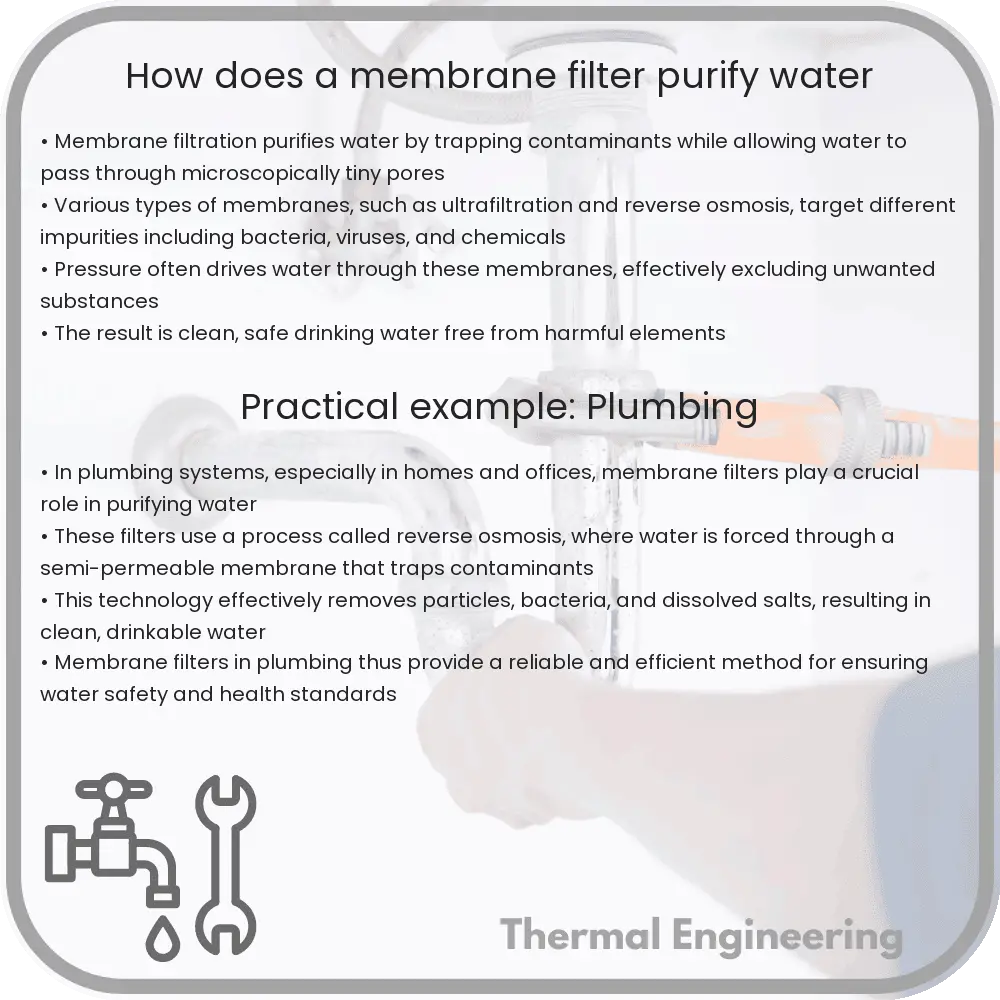Learn how membrane filtration, a crucial water purification technology, uses various pore-sized barriers to remove contaminants effectively.

Understanding How a Membrane Filter Purifies Water
One of the essential technologies in water purification today involves the use of membrane filters. These filters operate at the microscopic level to remove contaminants from water, making it safe for drinking and other uses. This article explains the fundamental principles behind membrane filtration, how it is implemented, and why it is effective.
What is Membrane Filtration?
Membrane filtration is a physical separation process in which a contaminated fluid is passed through a barrier (the membrane) with very small pores. These pores allow molecules of water to pass through while blocking larger particles, pathogens, and other contaminants.
Types of Membrane Filtration
There are several types of membranes used in water purification, categorized based on their pore size:
- Microfiltration (MF): Removes particles in the range of about 0.1 to 10 microns, including large bacteria and sediments.
- Ultrafiltration (UF): Targets particles from about 0.01 to 0.1 microns, including viruses, some bacteria, and large molecular weight solutes.
- Nanofiltration (NF): Effective for removing particles sized 0.001 to 0.01 microns, capable of excluding most organic compounds and some salts.
- Reverse Osmosis (RO): Has the smallest pore size and can remove particles as small as 0.0001 microns, filtering out almost all particles, including salts and monovalent ions.
How Does Membrane Filtration Work in Water Purification?
The process of water purification using a membrane filter involves several steps:
- Intake: Water from a source is taken in for processing. This could be brackish, grey, or wastewater depending upon the application.
- Pre-treatment: Water undergoes initial processing to remove large sediments and particles. This helps prevent clogging or damage to the main filtration membranes.
- Filtration: Water is then pushed through the membrane material. Depending on the membrane used (MF, UF, NF, RO), different contaminants are removed based on their size relative to the membrane’s pore size.
- Post-treatment: The purified water is sometimes treated chemically or with ultraviolet light to ensure sterilization, and the concentrate (contaminants and particles that did not pass through) is disposed of or treated further.
Pressure is a key factor in this process. Higher pressure is required to push water through smaller pores, which is why RO systems require more energy compared to MF or UF systems.
Advantages of Membrane Filtration
Membrane filtration offers several advantages over traditional water purification methods:
- Effectiveness: Capable of removing a wide range of contaminants including pathogens, chemicals, and sediments effectively.
- Energy Efficiency: Modern membrane systems, especially ultrafiltration, use less energy than methods relying on heat or extensive chemical treatments.
- Scalability: Systems can be designed for various scales, from portable devices for personal use to large-scale plants for municipal water treatment.
- Environmentally Friendly: Produces less chemical and secondary waste compared to conventional methods.
In conclusion, membrane filtration is a powerful tool for purifying water, ensuring safety and compliance with health standards. As technology advances, these systems continue to improve in both efficiency and cost-effectiveness, making purified water more accessible around the world.